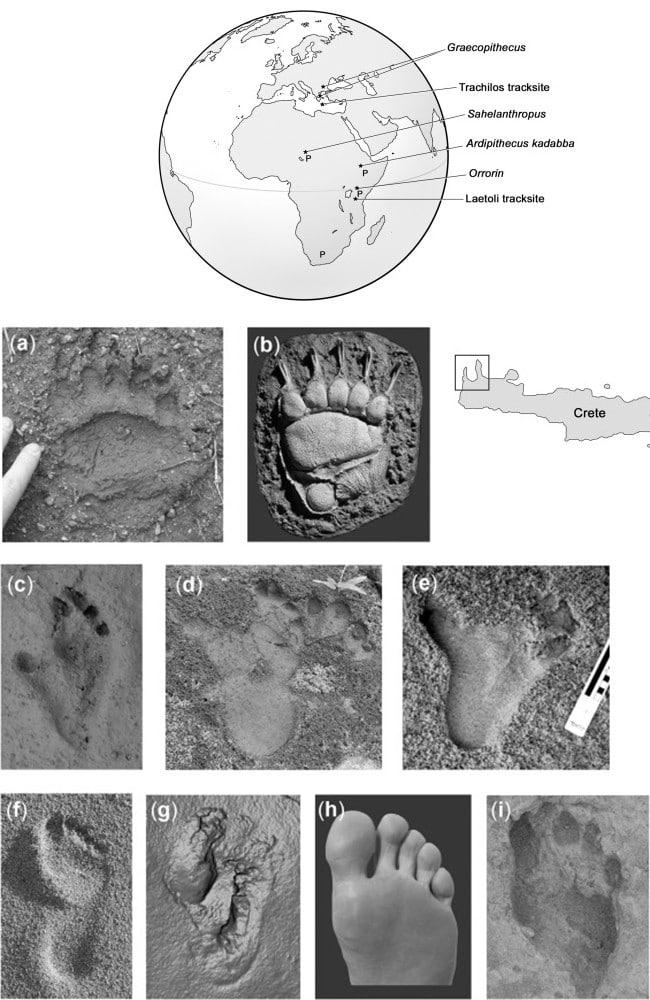Footprint find on Crete may push back date humans began to walk upright
HUMAN-like footprints have been found on an ancient sea shore. They shouldn’t be there. They’re in the wrong place at the wrong time.
HUMAN-like footprints have been found stamped into an ancient sea shore fossilised beneath the Mediterranean island of Crete.
They shouldn’t be there.
Testing puts the rock’s age at 5.7 million years.
That’s a time when palaeontologists believe our human ancestors had only apelike feet.
And they lived in Africa.
But a study into the Trachilos, western Crete, prints determines them to feature prominent human features and an upright stance.
And that’s significant as the human foot has a unique shape. It combines a long sole, five short toes, no claws — and a big toe.
In comparison, the foot of a Great Ape look much more like a human hand.
And that step in evolution wasn’t believed to have taken place until some 4 million years ago.
Footprint find on Crete may push back date humans walked upright
Results 1 to 4 of 4
-
02-09-2017, 07:16 AM #1
Footprint: Humans Walked Upright Earlier?
-
02-09-2017, 05:54 PM #2
And yet, still haven't determined where the bigfoot species originates from the branches of evolution.
-
02-09-2017, 06:29 PM #3
Bigfoot whom ravaged asian social paradigms with unfathomable deparvity, jeff?
A noxious parallel to all western procrastination?
That bigfoot?
-
03-09-2017, 03:30 AM #4Thailand Expat































- Join Date
- Mar 2011
- Last Online
- 25-03-2021 @ 08:47 AM
- Posts
- 36,437
Are you smoking a ripe turd, seewill?...
Thread Information
Users Browsing this Thread
There are currently 1 users browsing this thread. (0 members and 1 guests)









 Reply With Quote
Reply With Quote
